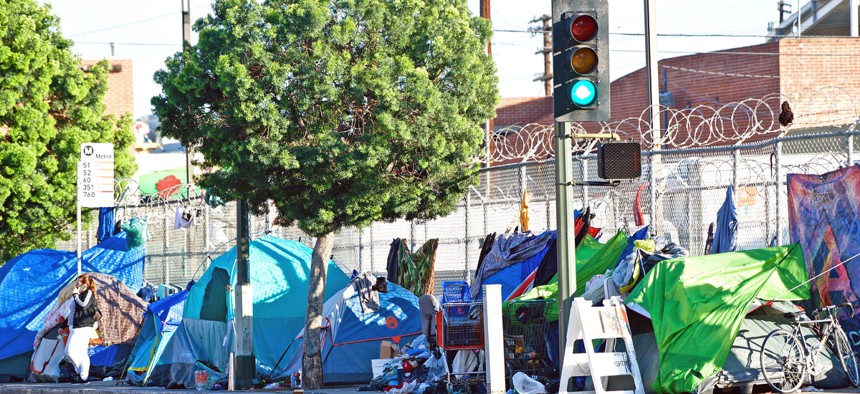A few short months ago, Eric Garcetti, the mayor of Los Angeles, was giving serious consideration to running for the Democratic presidential nomination. Now he finds himself in the midst of a homelessness crisis that could doom his political future.
If you were to conjure up the ideal California politician, you could do worse than Garcetti, a Jewish-Mexican-American Rhodes Scholar with a gift for gab, in English and Spanish, and a winningly unpretentious style. As if channeling a young Barack Obama, the mayor is fond of invoking storied moments from the American past—the Great Depression, the Second World War, the Civil Rights movement—to suggest that if previous generations were able to turn daunting challenges into historic accomplishments, then we ought to hold ourselves to the same exacting standard, a welcome alternative to the sourness and fatalism of other politicians on the left and right. But when it comes to Los Angeles’s long-running battle with homelessness, the mayor’s rhetoric looks more delusional than inspirational.
A month after Garcetti delivered his rousing State of the City Address, California released its annual homelessness count, revealing that after an encouraging 4 percent drop from 2017 to 2018, Los Angeles’s homeless population grew by 16 percent in 2019, bringing post-2011 growth up to 52 percent. These numbers would be alarming in any city, but in Los Angeles they are especially so because the city is the epicenter of a particularly brutal style of homelessness. Seventy-five percent of the city’s population is unsheltered, typhus and typhoid threaten to create a public health emergency, and a growing number of homeless people are either the perpetrators or the victims of violent crime.
The mayor’s response has been to increase public spending on homelessness sharply, but he’s had frustratingly little to show for it. When the homelessness issue burst onto the front page a few years ago, Garcetti jumped into action with an ambitious plan to build emergency shelters in all 15 districts of the city. But as the mayor soon discovered, the issue with an “emergency” plan oriented around construction is that Los Angeles is a far cry from Bob Moses’s New York. Eighty percent of the shelters have been held up by red tape and community resistance. The short-term measures, then, must take the city’s built environment as a given.






